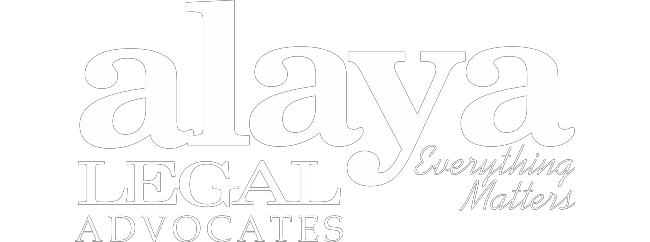PETROLEUM:
INFORMATION AND UPDATES
Alaya Legal presents its third issue on Petroleum: Information and Updates to its readers. In our earlier issue we had covered medium concentration oil countries across the globe which have been grouped into categories depending on the quantum of proven ‘petroleum’ reserves
present in such countries. This time our endeavour is to cover the statistics of ‘Low concentration areas’ and other major developments around the globe. Developments in the Republic of India are covered separately.
Low Concentration Areas are Angola, Ecuador, Norway, Azerbaijan, Sudan, Oman, Australia, Malaysia, Egypt, Gabon, UK, Indonesia, Yemen, Argentina, Syria, Thailand, Congo, Columbia, Japan, Turkey, South Africa and Uzbekistan.
GLOBAL SCENARIO
Statistics
Angola
According to Oil & Gas Journal, Angola had proven reserves of 9.5 billion barrels of crude oil in the end of 2011. Angola’s crude oil is light and sweet, making it ideal for export to major world markets like China and the United States. Ecuador
Ecuador is the fifth-largest South American oil producer and a leading source of crude oil imports for the U.S. West Coast. Ecuador, though only the fifth-largest oil producer in South America, is one of only two Western Hemisphere States belonging to OPEC. Ecuador produces approximately 500,000 barrels of crude oil per day (bbl/d), most of which is exported. Most of Ecuador’s oil reserves are in the Oriente Basin in the
eastern part of the country, underlying the Amazon.
Azerbaijan
According to the Oil & Gas Journal,Azerbaijan’s proven crude oil reserves were estimated at 7 billion barrels in January 2013. Azerbaijan is one of the world’s oldest producing countries and has played a significant role in the development of today’s oil industry. The country’s largest hydrocarbon basins are located offshore in the Caspian Sea, particularly the Azeri ChiragGuneshli (ACG) field.
Norway
Norway is the largest oil producer and exporter in Western Europe. According to the Oil & Gas Journal, Norway had 5.32 billion barrels of proven oil reserves as of January 1, 2012. All of Norway’s oil reserves are
located offshore on the Norwegian Continental Shelf.
Sudan
According to the Oil & Gas Journal, Sudan and South Sudan have 5 billion barrels of proved crude oil reserves as of January 1, 2013. The majority of reserves are located in the oil-rich Muglad and Melut basins, which extend into both countries. Oil is transported through two main pipelines that stretch from the landlocked South to Port Sudan.
Malaysia
Malaysia’s oil reserves are the fifth highest in Asia-Pacific and one of the top 30 highest reserves in the world. According to the Oil & Gas Journal, Malaysia held proven oil reserves of 4 billion barrels as of January 2013. Nearly all of Malaysia’s oil comes from offshore fields. The continental shelf is divided into three producing basins: the Malay basin offshore peninsular Malaysia in the west and the Sarawak and Sabah basins in the east. Most of the country’s oil reserves are located in the Malay basin and tend to be light and sweet crude.
Oman
According to Oil & Gas Journal,Oman has total proven reserves of 5.5 billion barrels of oil as of January 2013. Oman’s reserves are found mainly in the north and central onshore areas, comprised of disparate clusters of smaller fields.
Egypt
According to the Oil & Gas Journal’s January 1, 2013 estimate, Egypt’s proven crude oil reserves are 4.4 billion barrels, an increase from the 2010 reserve estimate of 3.7 billion barrels, with new oil discoveries boosting oil reserves in recent years. According to the Arab Oil & Gas Journal, several new oil discoveries have been made every year since 2008, with 16 in 2011, 16 in 2010, 11 in 2009, and 17 in 2008. Many of these oil discoveries were the result of exploration conducted by the U.S.-based Apache in Egypt’s Western Desert.
Egypt’s oil production comes from the Gulf of Suez, Nile Delta, Western Desert, Eastern Desert, Sinai, and the Mediterranean Sea.
Australia
According to the Oil & Gas Journal, Australia held over 1.4 billion barrels of proven oil reserves as of January 1, 2013. Most Australian crude oil is a light, sweet grade, typically low in sulfur and wax, and therefore higher in value than the heavier crudes. The majority of reserves are located off the coasts of the states of Western Australia and Victoria and the Northern Territory. Onshore basins, mostly found in the Cooper basin, account for only 5 percent of the oil resources. Western Australia has 64 percent of the country’s proven crude oil reserves, as well as 75 percent of its condensate and 58 percent of its LPG reserves. The two largest oil-producing basins are the Carnarvon Basin in the Northwest and the Gippsland Basin in southeastern Australia.
Indonesia
With oil first discovered in 1885, the hydrocarbon sector became an important part of Indonesia’s economy. The oil and gas industry, including refining, contributed approximately 7 percent to GDP in 2010, according to data from Indonesia’s National Bureau of Statistics. Indonesia was a member of OPEC from 1962 to 2009. Indonesia suspended its OPEC membership in January 2009 to concentrate on meeting demand at home. Gabon
According to the Oil & Gas Journal, Gabon had 2 billion barrels of proven oil reserves as of the end of 2012, the fifth-largest in Sub-Saharan Africa after Nigeria, Angola, Sudan and South Sudan (combined), and most recently, Uganda. Most of Gabon’s oil fields are located in the Port-Gentil area and are both onshore and offshore.
UK
According to the Oil & Gas Journal,UK had 3.1 billion barrels of proven crude oil reserves as of January 2013, the most of any EU member country. The vast majority of UK’s reserves are located offshore in the UK continental shelf (UKCS), and most of the oil production occurs in the central and northern sections of the North Sea. Although there is a modest amount of oil produced onshore, in 2012 more than 90 percent of total UK production took place offshore.
Yemen
According to the Oil & Gas Journal, Yemen had proved reserves of oil totalling 3 billion barrels as of January 2013. Yemen has two primary crude streams, the light and sweet Marib stream and the medium-gravity and more sulfur-rich Masila stream.
Argentina
Argentina is largely self-sufficient in crude oil, but imports oil products. Relatively low levels of exploration activity, combined with natural declines from maturing fields, explain the gradual erosion of oil production from its peak in 1998.
Syria
Syria began issuing concessions to oil companies in the 1930s, but production did not begin in the country until the late 1960s, and even then at very low levels. The Oil & Gas Journal estimated Syria’s proved reserves at 2.5 billion barrels as of January 1, 2013, a total larger than all of Syria’s neighbours except for Iraq. Much of Syria’s crude oil is heavy and sour, making the processing and refining of Syrian crudes difficult and expensive. Further, as a result of sanctions placed on Syria by the European Union in particular—which accounted for the vast majority of Syrian oil exports previously—there are limited markets available that can import and process the heavier crudes produced in Syria.
Columbia
According to theOil & Gas Journal, Colombia had about 2 billion barrels of proven crude oil reserves in 2012, up from 1.9 billion barrels in 2011. Much of Colombia’s crude oil production occurs in the Andes foothills and the eastern Amazonian jungles. Meta department, in central Colombia, is also an important
production area, predominately of heavy crude oil, and its Llanos basin contains the Rubiales oilfield, the largest producing oil field in the country.
Congo
As of the end of 2011, Congo has proven oil reserves of 1.6 billion barrels, according to Oil & Gas Journal,the fifth-largest proven reserves in Sub-Saharan Africa.
Thailand
Thailand is the second largest net oil importer in Southeast Asia behind Singapore. According to the Oil & Gas Journal, Thailand held proven oil reserves of 453 million barrels in January 2013, an increase of 11 million barrels from the prior year.
Thailand’s oil products consist primarily of diesel, liquefied petroleum gas (LPG), and naphtha as these fuels feed the transportation, petrochemical, and other industrial and residential sectors. Diesel fuel makes up about a third of the oil product mix and is a primary fuel for transportation.
Turkey
As of January 1, 2013, the Oil & Gas Journal estimated Turkey’s proved oil reserves at 270 million barrels, located mostly in the southeast region. Turkey’s oil production peaked in 1991 at 85 thousand barrels per day (bbl/d), but then declined each year and
bottomed out in 2004 at 43 thousand bbl/d.
Japan
Japan has very limited domestic oil reserves, amounting to 44 million barrels as of January 2012, according to the Oil & Gas Journal,down from the 58 million barrels reported by Oil & Gas Journal in 2007. Japan’s domestic oil reserves are concentrated primarily along the country’s western coastline. Offshore areas surrounding Japan, such as the East China Sea, also contain oil and gas deposits; however, development of these zones is held up by competing territorial claims with China.
South Africa
According to the Oil & Gas Journal, South Africa had proven oil reserves of 15 million barrels as of the end of 2011. All of the proven reserves are located offshore southern South Africa in the Bredasdorp Basin and off the west coast of the country near the border with Namibia. South Africa’s total oil production is around 180,000 bbl/d; however, synthetic fuels, derived from coal and natural gas, account for 160,000 bbl/d, or almost 90 percent of the country’s domestic petroleum supply. Crude oil and lease condensate (2,000 bbl/d), natural gas liquids (4,000 bbl/d), and refinery processing gain (14,000 bbl/d) make up the remainder amount. Crude oil and lease condensate is produced at the Oribi and Oryz fields, which PetroSA operates.
Uzbekistan
The Oil & Gas Journal estimates that Uzbekistan had 594 million barrels of proven oil reserves in 2012, 171 discovered oil and natural gas fields, 51 of which produce oil and 17 of which produce gas condensates. The majority of the known oil reserves in Uzbekistan are in the Bukhara-Khiva region in the southeast of the country, and most fields are small apart from the sizeable Kokdumalak field.
Market Update-Global
Egypt Organizing Timetable for Energy Debts
September 1, 2013 Egypt is in the process of preparing a timetable for the purpose of repaying its arrears on debts it owes to foreign oil companies to reassure them to continue investing in the country.Egypt owes about $5 billion to foreign oil companies producing oil and gas on its land.
Libya Imports Fuel to Combat Power Cuts
September 2, 2013 Libya is planning to importdiesel and fuel oil to stop increasing power cuts. The civil war in Syria in 2011 led to shutting down of most of its gas fields in its eastern region, which had supplied power plants. Armed groups, security guards and oil workers with tribal loyalties have shut down pipelines and oil ports across the country.
Oman All Set to Award Six Oil, Gas Blocks
June 3, 2013 Saleh al Anboori, Director-General of Petroleum Investments, said to a local newspaper that Oman is in final negotiation phase with several foreign energy firms bidding for six onshore oil and gas blocks. Exploration & Production Sharing Agreements for the six blocks are expected to be signed before end of 2013.
Bids for additional seven blocks, three offshore and four onshore are currently under evaluation. Bidding for eighth blocks are still open. Total 12 companies are presently exploring for oil and gas in 19 blocks covering an aggregate acreage of over 211,000 sq km. Total eight companies are producing oil and gas from 11 blocks.
Tap Oil Farms Out Stake in Australian Subsidiary in Exploration Permits
June 3, 2013
Tap (Shelfal) Pty Ltd., a wholly owned subsidiary of Tap Oilhas entered into an agreement with JX Nippon Oil and Gas Exploration’s Australian subsidiary to farmout a portion of its interests in Exploration Permits WA-320-P and WA-155-P (Part II).WA-320-P is an exploration permit in the offshore Carnarvon Basin, Western Australia which holds the Palmerston gas prospect.
Inpex has been granted the permit WA-494-Pthrough its subsidiary
June 9, 2013
Inpex Browse Ltd., a subsidiary of InpexCorporation, has been granted permit WA-494-P, offshore Western Australia, at the Australian Offshore Petroleum Acreage Release 2012. The Company holds 100% participating interest in the permit. It will conduct the exploration activities as an operator. Seychelles Offers Bids for Oil, Gas Assets
June 12, 2013
Seychelles which operated under the concession contracts has offered oil and gas companies to bid for exploration blocks. Even though Seychelles does not have a fixed number of blocks, however, companies may bid for areas comprisingup to 10000 square km out of its 1.3 million square km Exclusive Economic Zone. Roc Oil looks for Myanmar Oil, Gas Assets June 12, 2013
Roc Oil is eyeing for local partners in Myanmar to bid for oil and natural gas assets in the South East Asian country.Myanmar’s potential gas resources are assessed at as much as 45 trillion cubic feet. As per BPdata,Myanmar has 7.8 trillion cubic feet of proven gas reserves.
Market Update- Republic of India
Tenth Round of Oil and Gas Block Auction
September 25, 2013
India is likely to launch the 10th round of auction of oil and gas blocks in January as the country looks to attract foreign investors to boost domestic production. The Oil Ministry is looking at offering as many as 68 blocks or areas for exploration of oil and gas in the 10th round of New Exploration Licensing Policy. The round is likely to be announced at the Petrotech Conference.
Cabinet’s New Policy: Only ONGC and OIL Eligible for Shale Oil and Gas Exploration-
September 25, 2013
The Cabinet has approved a shale gas and oil exploration policy, which will pave way for state-run ONGC and Oil India to hunt for non-conventional resources in blocks awarded to them without auction, government officials said. But the policy will prevent participation of successful private explorers such as Reliance Industries, GSPC and Cairn India and restrict exploration of shale resources in only five onland basins.
ONGC, Partners to Invest Rs 1,100 Cr in Cambay Block
July 24, 2013
State-run Oil and Natural Gas Corporation (ONGC) and its partners — Tata Petrodyne and Hindustan Oil Exploration Co — will invest Rs 1,100 crore in developing an offshore block in the Gulf of Cambay, off the west coast of India.
Essar Oil to double refining capacity of Vadinar plant
June 3, 2013
Essar Oil plans to increase the capacity of its Vadinar refinery in Gujarat from the present 20 million tonnes to 40 million tonnes per annum (mtpa) in the next five years. This would involve an investment of about Rs 35,000 crore. Another investment of about Rs 40,000 crore would be made to set up an integrated petrochemical project.
Iraq Offers Three Oil Blocks to National Oil Companies
July 11, 2013
Iraq has offered three discovered blocks in the Middle Furat oilfields on a nomination basis to Indian companies, particularly national oil companies. It has also agreed to restart negotiation with ONGC Videsh Ltd. on the long-pending contract for its oil block 8. The Gulf nation has also shown interest in Indian Oil Corporation’s 15 milliontonne Paradip refinery project in Odisha.
Republic of Kazakhstan Pre-empts ONGC Videsh Bid to Acquire ConocoPhillips Stake in North Caspian Sea Production Sharing Agreement (NCS PSA) that Includes Kazakhstan’s Kashagan Field
July 03,2013
The Government of Kazakhstan has announced that in accordance with the Republic of Kazakhstan Law (ROK) on Subsurface and Subsurface Use, ROK has exercised its priority right and pre-empted the bid by ONGC Videsh to acquire the 8.4% stake of ConocoPhillips in the North Caspian Sea Production Sharing Agreement (NCS PSA). ONGC Videsh is the 100% owned subsidiary of ONGC, the National Oil Company of India. It is understood that KazMunayGaz (KMG), the National Oil Company of Kazakhstan, shall be designated as the buyer, on behalf of the State. ONGC Videsh had finalized the definitive agreements in November 2012 for acquisition of 8.40% Participating Interest of ConocoPhillips in the NCS PSA. The bid of ONGC Videsh was not pre-empted by the co-venturers of the NCS PSA within in the stipulated time period that ended in January 2013.
ONGC Sets New Ultra-Deepwater Drilling World Record
July 04, 2013
ONGC, a leading E&P Company and a major operator in Indian deepwaters, has spudded a well in 10411 feet (3174 m) of water depth on 18th June 2013. The well #1-D-1 in Exploratory Block KG-DWN-2005/1, off East Coast of India, is being drilled by rig DDKG1. This enabled ONGC to surpass its own earlier world record set in January 2013, for drilling a well in deepest water depth.
ONGC Signs MoU with RIL on Eastern Offshore Facility Sharing Arrangement
July 28, 2013
Oil and Natural Gas Corporation (ONGC) has inked a Memorandum of Understanding with Reliance Industries Ltd. (RIL) to explore the possibility of sharing the latter’s infrastructural facility in the East Coast.
The MoU aims at working out the modalities for sharing of infrastructure, identifying additional requirements as well as firming up the commercial terms. Under this plan, ONGC has a conservative estimate to produce about 6 to 9 MMSCMD of gas by mid-2017 from G-4, KG-DWN – D & E fields in the first phase. India Could Save $8.5 Bln by Buying Extra Iranian Oil
September 1, 2013
India’s Oil Minister M. VeerappaMoily stated that India could save $8.5 billion in foreign exchange spending on crude oil imports in 2013/14 if it relied more on supplies from Iran, which is able to accept payment in rupees.
New Oil Findings
Statoil Makes Oil Discovery Near Norne Field in Norwegian Sea
September 16, 2013
Statoil has made an oil discovery in the Svale North prospect in the Norwegian Sea about 9 km northeast of Norne field.
Cnooc Made Oil Discovery Off Congo
September 9, 2013
CNOOC Ltd. made an oil discovery at offshore Congo Brazzaville.
Omv Announces Oil Discovery in the Barents Sea
September 6, 2013
OMV has made Barents Sea’s northernmost oil discovery on offshore Norway with an estimated 60-160 million bbl of recoverable oil.
Statoil Makes Third Flemish Pass Basin Oil Discovery
August 27, 2013
Statoil ASA made its third oil discovery in the Flemish Pass basin offshore Newfoundland and Labrador.
Canacol has Middle Mag Oil Discovery in Colombia
August 27, 2013 Canacol Energy Ltd. made an oil discovery in a shallow conventional Tertiary Lisama sandstone reservoir in Colombia’s Middle Magdalena Valley.
Neon Energy Finds Oil, Gas Prospect Offshore Vietnam
June 7, 2013
Neon Energy’s functional evaluation of the 3D seismic data located within the company’s offshore Vietnam Block 120 has found a new oil and gas prospect as reported by the company official to the local newspaper.
Pennsylvania Oil and Gas Lease Act Signed into Law
July 9, 2013
On July 9, 2013, law Senate Bill 259 was signed and became the Oil and Gas Lease Act (Act), amending the Guaranteed Minimum Royalty Act. The Act came into effect on September 7, 2013. The Act provides for new rights and requirements as to payments resulting from the production under oil and gas leases. It also authorizes an oil and gas operator to combine contiguous leased acreage. The Act further defines an Interest Owner as a person who is legally entitled to payment from the proceeds derived from the sale of oil or gas from a well located in the Commonwealth. Seemingly, the payment disclosure requirements relate not only to lessors and non-participating royalty owners, but also overriding royalty interest owners and other persons who share in the proceeds from the sale of oil and gas.
European Union’s Directive on Safety of Offshore Oil and Gas Operations
June 10, 2013
On 10thJune 2013, the European Union adopted a Directive on safety of offshore oil and gas operations. The new rules will make sure that the highest safety standards will be followed at every oil and gas platform across Europe. It will also ensure that we react effectively and promptly should an accident nevertheless occur. This would help minimise the possible damage to the environment and the livelihoods of coastal communities. The new directive sets clear rules that cover the whole lifecycle of all exploration and production activities from design to the final removal of an oil or gas installation.
Supreme Court Validates Government’s Move to Charge Deregulated Diesel Prices to Bulk Consumers
September 17, 2013,
The Supreme Court has validated the government’s decision to charge market prices for diesel sold to bulk buyers such as defence, railways and transport corporations. The decision had been stayed by some courts after transport corporations challenged it. The apex court said that “Oil is important. But the rupee value is going down, there’s a huge current account deficit. What will be the impact if prices are pegged at earlier currency rates? Oil has to be imported. We can’t ignore this fact. You can’t expect subsidies to be continued forever. Ultimately the economy has to survive.” Justice RM Lodha and JusticeMadan B.Lokur conceded the government’s rationale for increasing prices of petroleum in a phased manner over the years.
Sources
- Norwegian Petroleum Directorate
- U.S. Energy Information Administration
- The International Energy Agency
- Economic Times (India)
- Natural Gas Asia and Europe
- OPEC
- Oil and Gas Journal
- European Commission
|
||||||
Disclaimer
The information in this private circulation is not legal advice and should not be treated as such. The information is taken from public domain and is purely for private and non- commercial purposes. We do not represent that the information is correct, accurate, complete or non- misleading. This disclaimer will be governed by and construed in accordance with laws of India, and any disputes relating to this disclaimer will be subject to the exclusive jurisdiction of the courts of the Republic of India.
If you do not accept the terms of this Disclaimer or do not wish to receive this circulation, please reply to this email with ‘Do Not Send’.

























